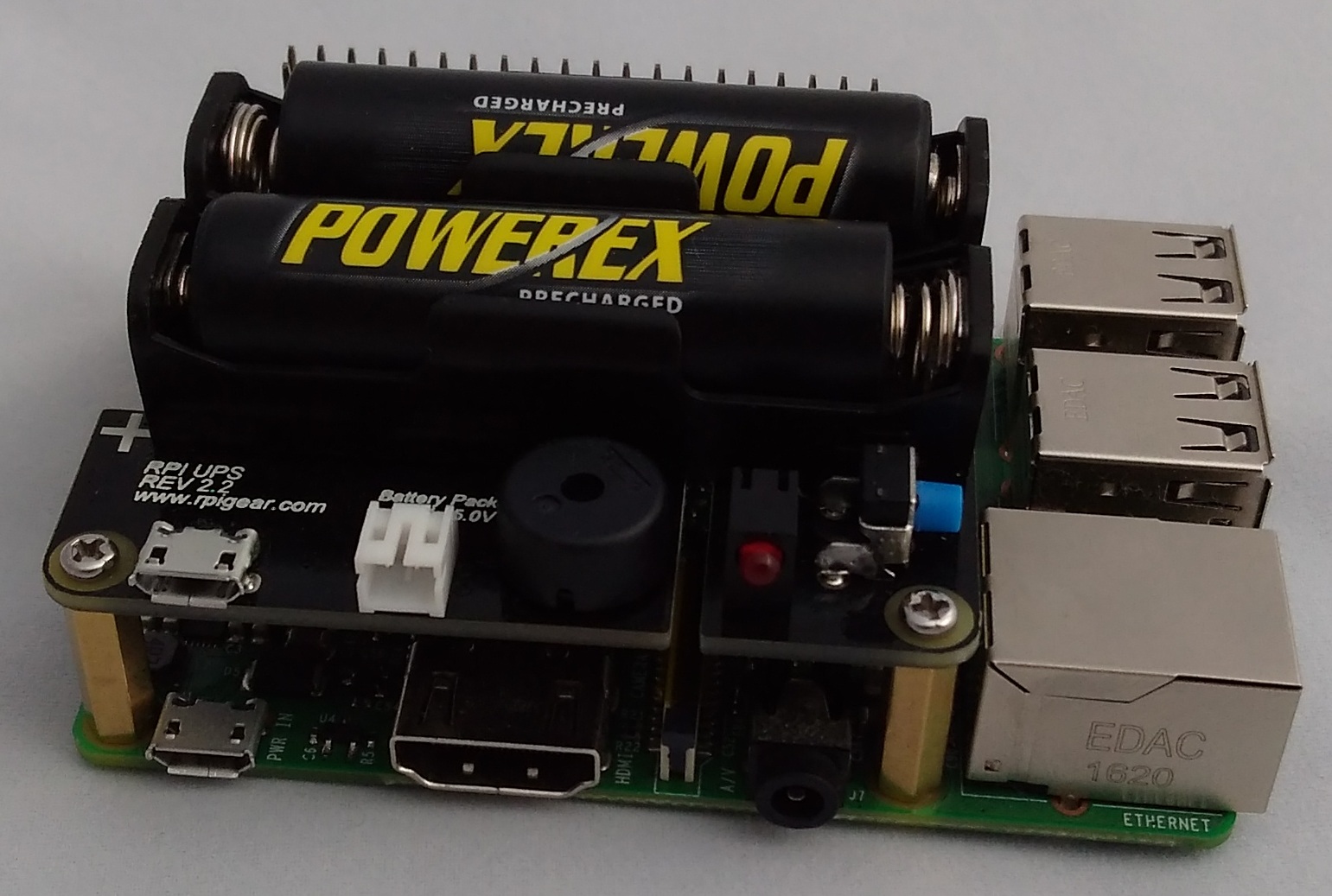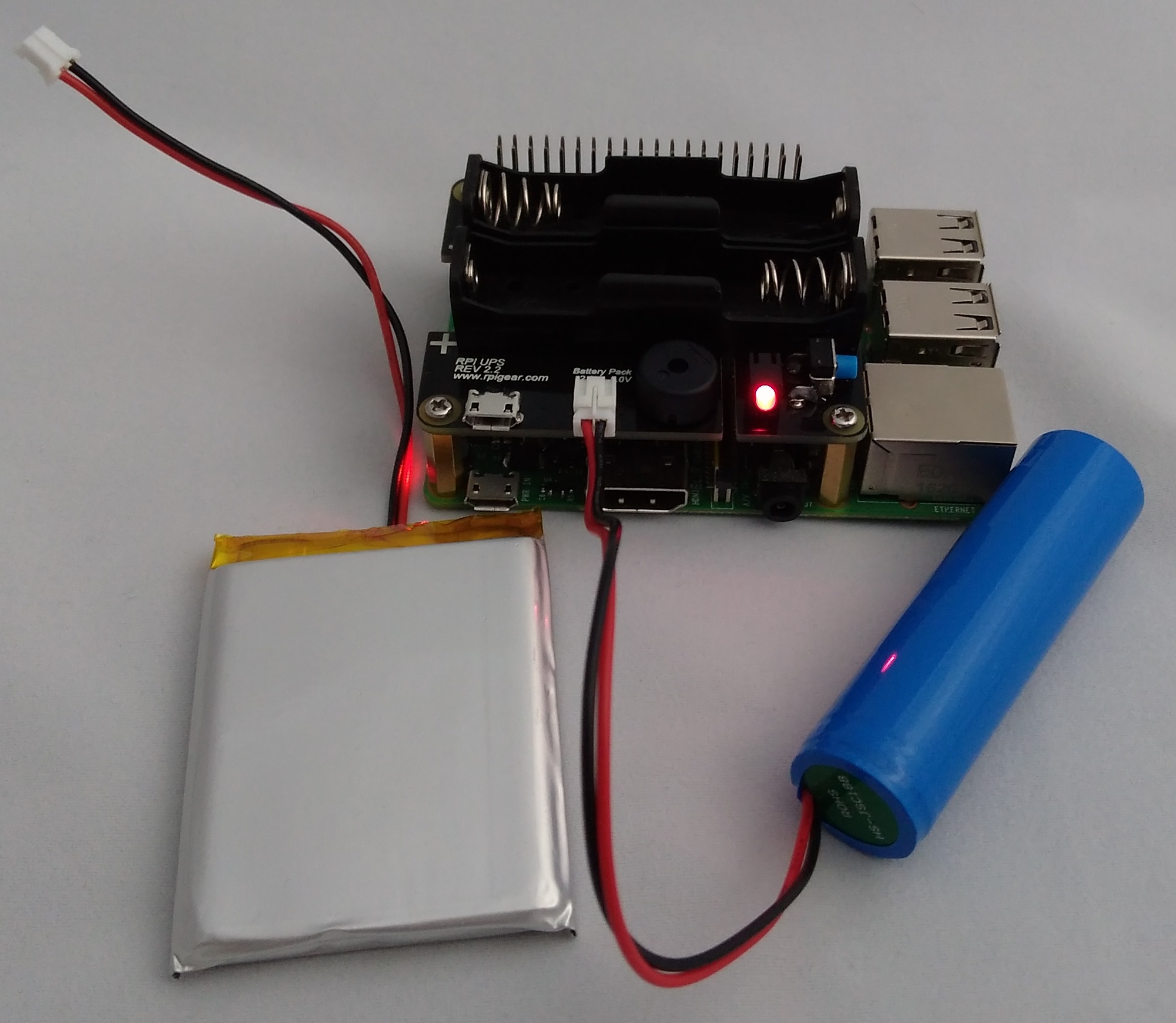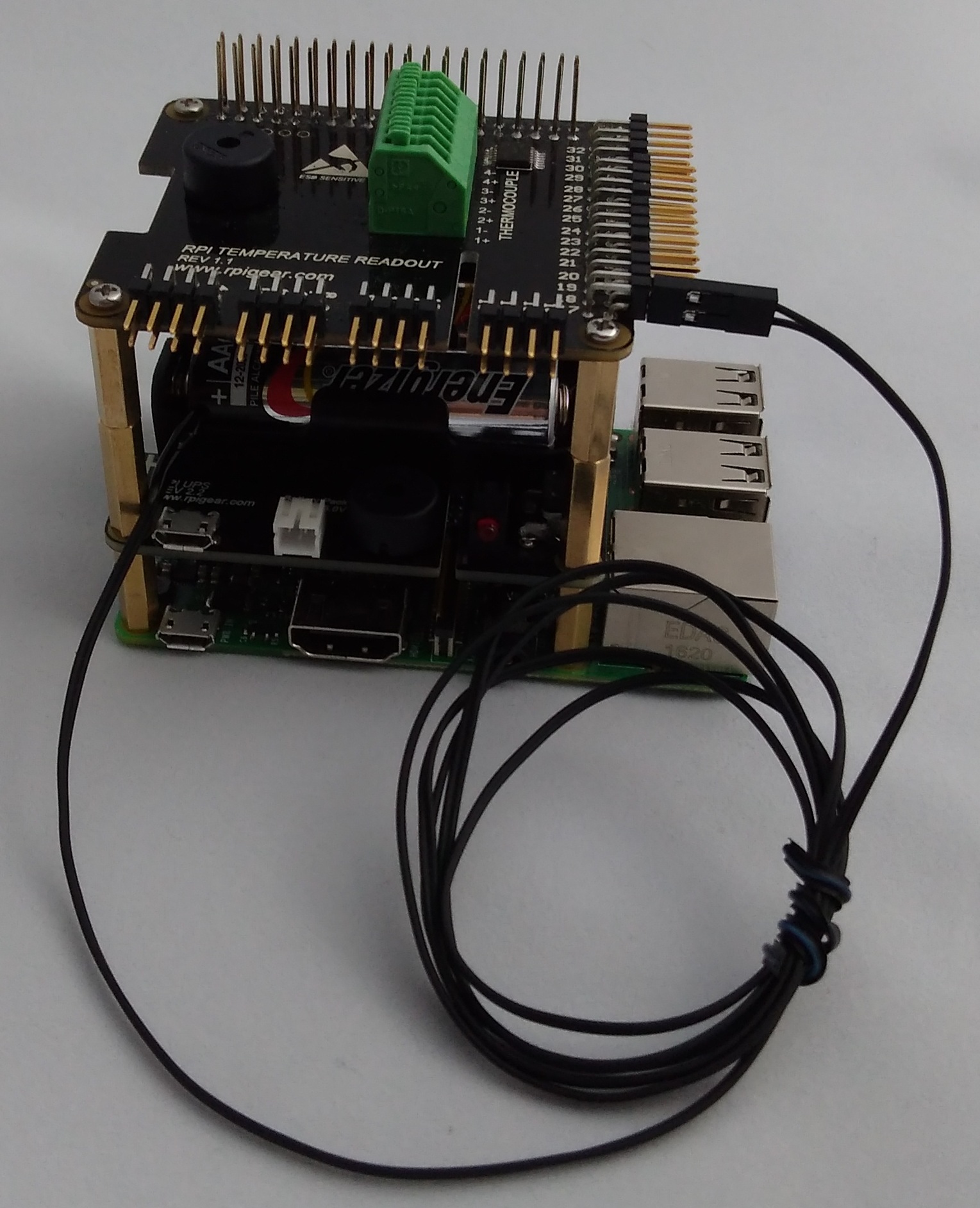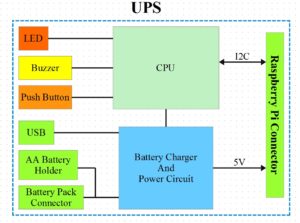Overview
The Raspberry Pi UPS is used to run the Raspberry Pi from batteries, or as a general power backup.
Main Features
-
Operates from two AA batteries or a battery pack
-
Supports Alkaline, NIMH, and Lithium batteries
-
Integrated battery charger with auto and manual modes
-
Stackable architecture and configurable I2C address allow the UPS to coexist with other daughter cards/hats.
-
Advanced features for remote operation, including low power sleep mode and various wake up sources(battery level, timed alarm, USB power stable).
-
UPS events logging to /var/log/messages
Applications
-
Robotics
-
Home automation
-
Remote sensing and telemetry
Purchasing
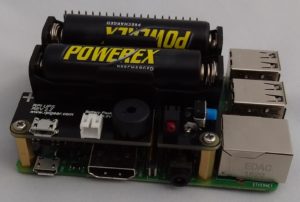
- Solar Power Module for Raspberry Pi
- Mounting Hardware(fem/fem standoffs x 4, M2.5 screw x 8)
- quick connect crimp terminals(4 pieces)
- Note: Raspberry Pi and batteries are not included.

- Stacking hardware to connect multiple temperature readout boards
- 4 x male/female extra tall m2.5 standoffs
- 20x2 male female stacking connector
- Part# RPI-STK-KIT-1
FAQ
Which versions of the Raspberry Pi are supported ?
PI 1 Model A+, PI 1 Model B+, PI 2, PI 3, Pi 3 B+, Pi Zero.
What types of batteries are supported ?
AA batteries usually provide between an hour and two hours of runtime depending on loading of the Raspberry Pi. Lithium packs are a better choice for heavier loads and can offer much longer run times compared to AA batteries.
Will Alkaline AA batteries be depleted over time under normal conditions ?
As long as USB power is present and the UPS is not running from batteries, the current drain of the batteries will be small(about 20 micro amps, details in datasheet). This means the batteries will not need replacing for many years as long as the USB power is stable.
What type of USB power supplies can be used ?
For a moderately loaded Raspberry Pi a 1A/5V USB power source should be adequate. If multiple power hungry USB devices are connected then a 2A/5V source should be used. The battery charger also uses between 100 and 200mA from the USB input while charging the batteries.
What is low power sleep mode and wakeup ?
This feature is targeted at remote sensing/monitoring applications that need to save energy. For example if the Pi needs to take a photo once per hour and send it over an RF link, the UPS can turn the power off and turn it back on an hour later. During the off period, only uA(micro amps) of current are drawn greatly extending battery life.
Can I connect a solar charger to the USB input ?
Yes, as long as the voltage output doesn’t exceed 5.5V. Because the battery charger circuit works during sleep mode, even small low power solar chargers can be used. Please see the -battery_wake_up_<on/off> <voltage> command that allows the UPS to wake up after the battery is charged to the specified level.
